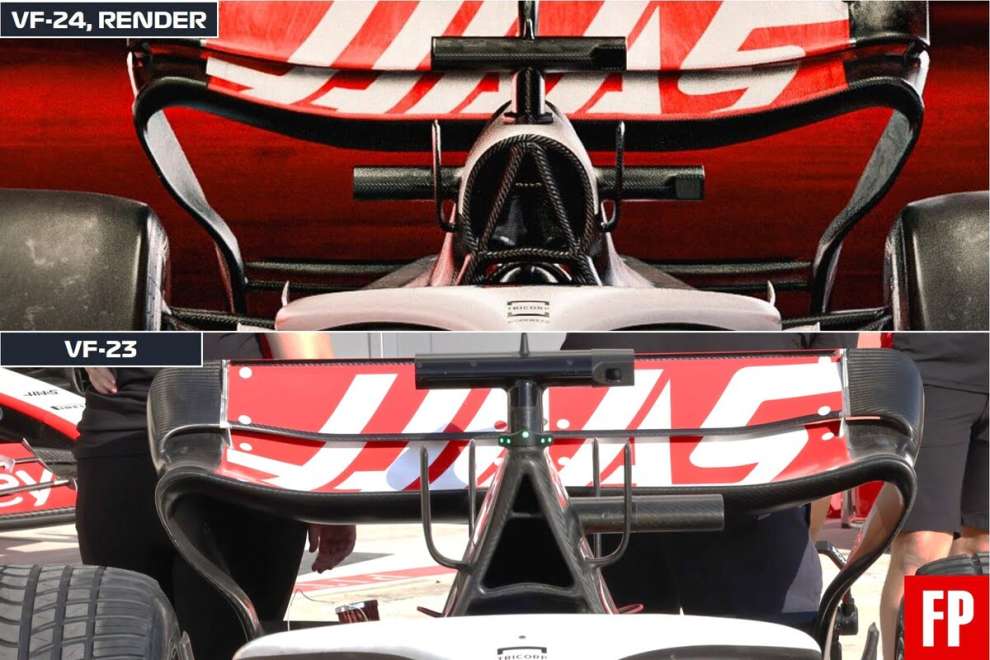The presentation of the new season at Haas follows the line followed in past years, with the publication of some digital renderings instead of photographs of the physical car. According to as stated by the team Italian-American, the images would show both the livery and the project of the VF-24, but undertaking a technical study in the face of renderings alone is always thorny. In fact, cases of artfully retouched images that do not correspond to reality are not rare, as was the case with the Haas presentation in 2022. On other occasions, however, the computerized graphics share a common basis with the real single-seater, becoming a preview of the shapes of the new car. From this perspective, the renderings of the VF-24 stimulate curiosity, presenting some differences compared to the car at the end of 2023, with the awareness that what is visible is subject to confirmation or denial upon arrival of the first images from the track.
Slender bellies, bulging hood
The renderings show a VF-24 that recalls the shapes of the Red Bulls of recent years, towards which Haas had already begun to address with the updates at the end of 2023. The images suggest the displacement of the lower cone of protection of the passenger compartment, now integrated into the bottom, a novelty that would allow the recess under the side to be accentuated, as consistently depicted in the renderings. The bodywork instead offers flattened bellies, channeling the flows adhering to the surfaces in the lower part of the rear axle, to then vent behind the diffuser.
An overall logic can be perceived in the changes present in the renderings of the VF-24, which would seem to confirm it a certain truthfulness. The air intakes of the side radiators, in fact, are squashed compared to the VF-23, an increasingly widespread trend on the grill. The objective is to increase the air flow channeled under the side, increasing the local pressure with which to remove external turbulence from the bottom. The thinning of the lateral intakes would compromise internal cooling, but the same images show how this would be compensated by the wider dynamic intake on the rider's head.
Here we can see how two new ducts would now open around the previous triangular shape, bringing cooling air to the radiators moved to central position, an operation consistent with the streamlining of the sides. The presence of a larger bonnet is therefore justified, with a large opening at the rear for the venting of hot air from the engine compartment. The solution, renamed 'tray', was already appreciable on numerous 2023 cars, including Red Bull, and favors the evacuation of heat through the vent at the rear, reducing the lateral cooling grills, in favor of the aerodynamic cleanliness of the bodywork .

Ferrari suspensions
As regards the mechanics, the renderings show suspension schemes very similar to those of 2023, with a kinematics push-rod at the front And pull-rod at the rear. It is known that Haas purchases the mechanics from Ferrari, but the VF-24 will not necessarily mount the latest suspensions designed in Maranello for 2024, in addition obviously to the possibility that the new features in this area have been digitally retouched in the renderings. For a more in-depth and less uncertain analysis of the new car, the appointment is therefore postponed to the images of the track. The first useful opportunity will be the shakedown on February 11th, followed by the collective tests in Bahrain at the end of the month.
#Haas #virtual #news #waiting #real #VF24